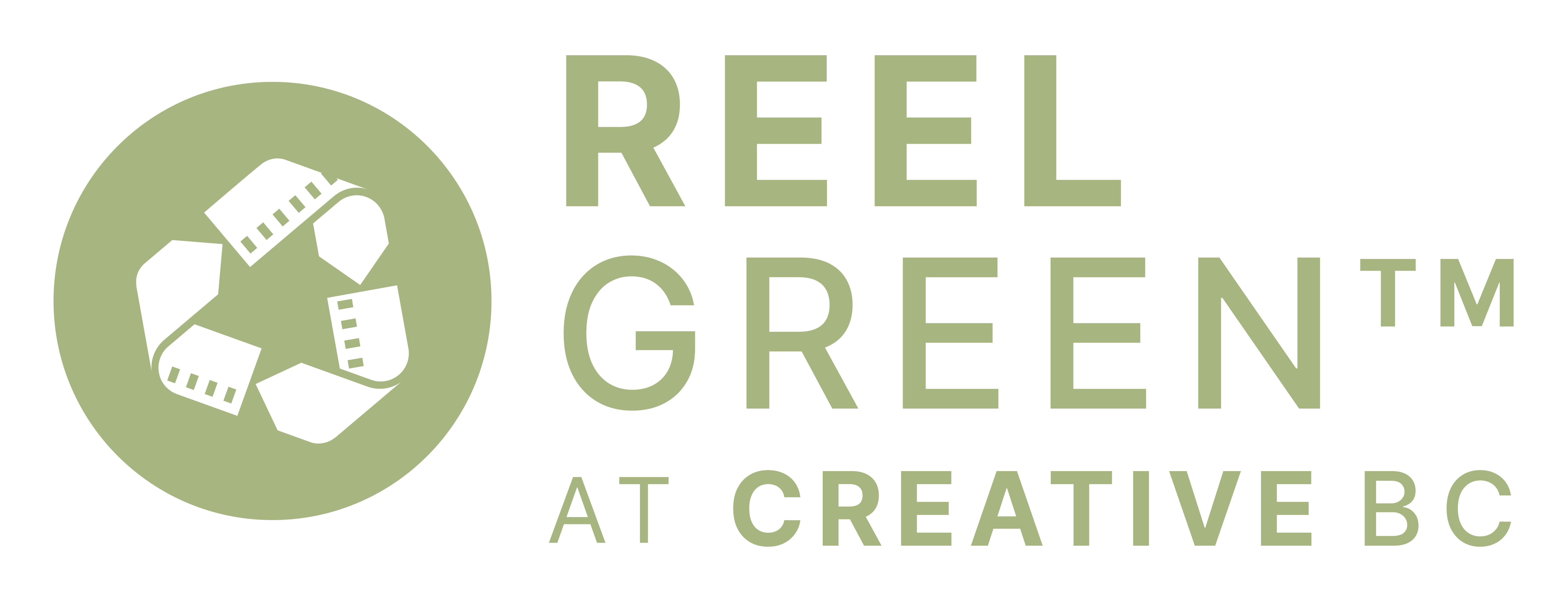The fourth annual REEL Earth Day Challenge has raised $100,000 toward projects delivered through Metro Vancouver Regional Parks Foundation. Since 2021, the annual BC film industry fundraiser for parks and greenspaces has raised over $473,000. “Creative BC's Reel...
Related News
Reel Green™ Vendor Spotlight: Driving Force
Driving Force, a Reel Green™ Advisory Partner and eco-friendly vendor is driving sustainability within the film industry! Across Canada, Driving Force is known for solving problems, keeping promises, and helping communities. Their sustainable role in the Vancouver...
REEL Earth Day Challenge – Fall 2023 Report
The 2023 #REELEarthDayChallenge brought together film crews, productions, sponsors and industry stakeholders to raise funds towards projects for Metro Vancouver Regional Parks. This year the BC film industry raised $100,000 towards 9 projects. These projects are led...
Reel Green™ Circular Economy Toolkit is Now Live!
A circular economy is one that minimizes waste and makes the most of available resources. In contrast to the traditional linear economy, which follows a "take, make, dispose" model, a circular economy aims to keep products, materials, and resources in use for as long...
Independent BC Film Case Study: A Thousand Days of Solitude
Take a look at local Director and Film Maker Jeremiah A. Benskin’s case study on his film A Thousand Days of Solitude. The study takes a look at sustainable production practices Benskin used to minimize the film’s carbon footprint.
A Thousand Days of Solitude is screening in Vancouver on January 23rd, 2018. Don't miss out and get your tickets here.
Background
Jeremiah A. Benskin is an auteur filmmaker whose work has been shaped by his diverse background, his experience and his persistent commitment to the art of making films.
Overall though, Jeremiah is indeed a poet and a storyteller at heart. Some of Jeremiah’s most recent highlights include his short film ‘The Lure Project’, which was featured on CBC’s ‘The Exhibitionists.’ The short film is about an artist who submerges his artwork to raise awareness about water.
Prior to, Jeremiah was brought on as one of the lead video producers on Solar Impulse 2’s historical “green” journey around the world (without using a drop of fossil fuel).
This experience inspired Jeremiah to implement green technology into his most recent film ‘A Thousand Days of Solitude’, a short film that addresses solitary confinement in Canada.
Case Study
Q: Why did you want this film to use “green” power? What was your mindset?
A: I wanted to use “green” power on the short film A Thousand Days of Solitude because quite simply this aligned with my personal values and the overall ethos of the film. It just made sense. Indeed, the green power is still in stages of infancy and yes there’s a bit of learning curve; however, that’s how it always is when you’re doing something new. For me, it was an exciting opportunity to create art and deliver a compelling message using cutting-edge sustainable technology.
Before the film, I was hired to work with Solar Impulse and document their mission across the globe using a solar-powered airplane (SI2); that journey rubbed off on me and left me inspired to work on a new project with a fresh approach in mind.
Q: What were some of the challenges with this new approach to renewable power?
A: At the time, there were indeed some challenges with using renewable energy. One of them being access. There wasn’t and still aren’t many green companies out there that offer green technology to help with production. I was lucky to find Portable Electric, whose experience was primarily with events; however, they were game to explore how they could facilitate the demands of a short indie film. Since then, they’ve gone on to supply other productions.
Indeed we were all excited, yet a bit apprehensive and still green at using green so to speak. There is a process and momentum of working on a film set that the majority of the crew are used to; however, it’s a bit different when you’re working on a green set. You have to walk in thinking sustainability.
A big challenge for us was that there was little house power at the location, to begin with so we relied solely on the green generators for our power which in turn really forced us to be mindful of what energy we used because there was only a finite supply. You couldn’t (and nor should you) leave a light on for hours on end when it wasn’t being used. Just like you shouldn’t throw away cans and bottles in the garbage. Recycle and compost if you can (we had both on set). Ultimately, it’s a shift in perspective and you have to be willing to adapt to
a new workflow and keep an open mind. I documented our entire process in a series of vlogs: Shooting an Indie Film with Green Energy. You can check them out here.
Q: What worked? What can crew learn from this?
A: Aside from the tech, what worked over everything was our adaptability to the process. Initially, some crew were very skeptical of the entire process, but soon enough they were the first ones to promote this new approach to filmmaking on social media. I think what crew can learn from this is how a new approach can indeed work, sometimes it’s just thinking outside the box and being willing to work with it.
Q: Will you go this route again?
A: Regardless whether the process was a bit of trial and error, it did do the job and when you see the film you wouldn’t even be able to tell that the entire production used green energy to fuel the production. It gave us the results we needed and if the technology continues to be available I would certainly use it again. Before you know it everyone will be using green because it’s just getting easier, cheaper and more sustainable
Stay Connected
Subscribe to our newsletter


